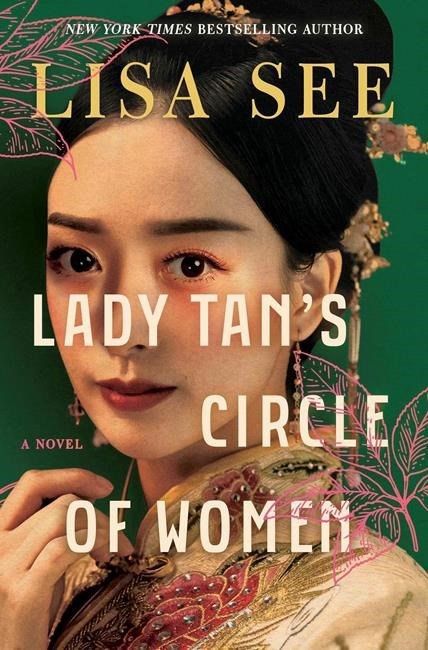
This cover image released by Scribner shows "Lady Tan's Circle of Women" by Lisa See. (Scribner via AP)
June 12, 2023 - 10:09 AM
“Lady Tan’s Circle of Women,” by Lisa See (Scribner)
Soon after she published her last novel, 2019’s “The Island of Sea Women,” Lisa See joined much of the rest of the world in seclusion, sheltering at her Los Angeles home to avoid the deadly coronavirus.
Little did the prolific, 68-year-old author realize that would lead directly to one of her most meticulously researched, fascinating and ultimately enjoyable works, “Lady Tan’s Circle of Women.”
As she paced back and forth past a shelf filled with research books, See saw one on women’s health in Imperial China that had sat there unread for 10 years. With nothing better to do, she opened it and learned of a woman named Tan Yunxian, a brilliant but now all but forgotten doctor who at age 50 had published a groundbreaking book in 1511 detailing all of her medical cases to that time.
Immediately, a new novel was being crafted. But unlike earlier See works such as “Shanghai Girls,” “Dreams of Joy” or “The Tea Girl of Hummingbird Lane,” which are set in historic but more modern times and in which Western and Asian culture often meet, this one centers strictly on the days of China’s Ming Dynasty. But like the others, it is also fiction based on fact.
Told in Lady Tan’s voice, her story begins in 1469, when its subject, the precocious 8-year-old member of a young family, is just beginning the traditional and very painful process of female foot binding. In just seven more years, she is told, she’ll be ready for an arranged marriage, one that to her delight turns out to be happy.
Long before that, however, her mother dies at age 28, most likely of a foot-binding infection. She, her brother, nanny and her father’s concubine are hustled off to the estate of her wealthy physician grandparents in the prosperous city of Wuxi. There, her grandmother takes a shine to the bright, inquisitive girl and, seeing her interest, begins to teach her medicine.
It’s a fortuitous move because most women of the time had few rights and even a female physician’s were limited. As her mother warned her from her deathbed, “Whether animal or woman, we are a man’s possessions. We women exist to give him heirs and feed, clothe and amuse him.”
At the same time, female patients in many cases could only be treated by a woman doctor, and Lady Tan cares for them all, from peasants to people of means.
As with any See novel, there is plenty of intrigue as concubines conspire to move their sons into important positions of power or even replace wives with themselves while various sycophants plan poisonings and murder.
Through it all, Lady Tan perseveres with help from her family and her childhood best friend, Meiling, a girl who, despite much lesser means, grows up to be a midwife, delivering babies and saving lives, including that of her closest friend. With Meiling and others she forms unbreakable bonds of trust.
As the years pass, Lady Tan develops numerous herbal and other natural remedies for everything from easing menstrual cramps to fighting obesity, injury and other ailments. Many are said to still be in use, saved from obscurity by a nephew who re-published her book nearly 30 years after her death at age 96.
But at its heart, “Lady Tan’s Circle of Women” is much more than a story about a pioneering doctor. It’s a tale of enduring friendship and the effect it can have both in the moment and centuries afterward.
“For much of my life I felt alone, but over the years a circle of women came to love me and I came to love each of those women in return,” Lady Tan says as she looks back on life, something she recalls her mother once described to her as “like a sunbeam passing through a crack.”
News from © The Associated Press, 2023